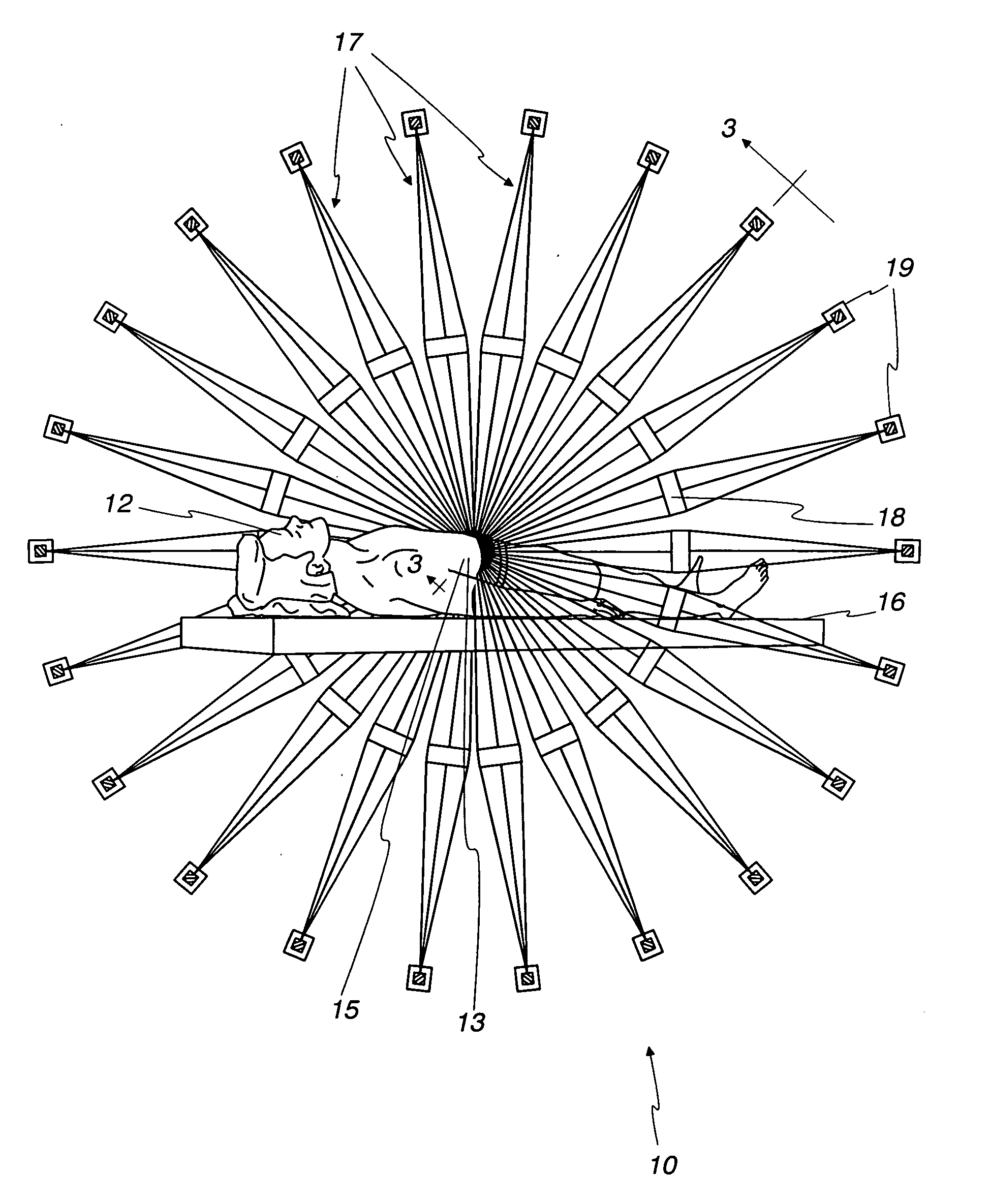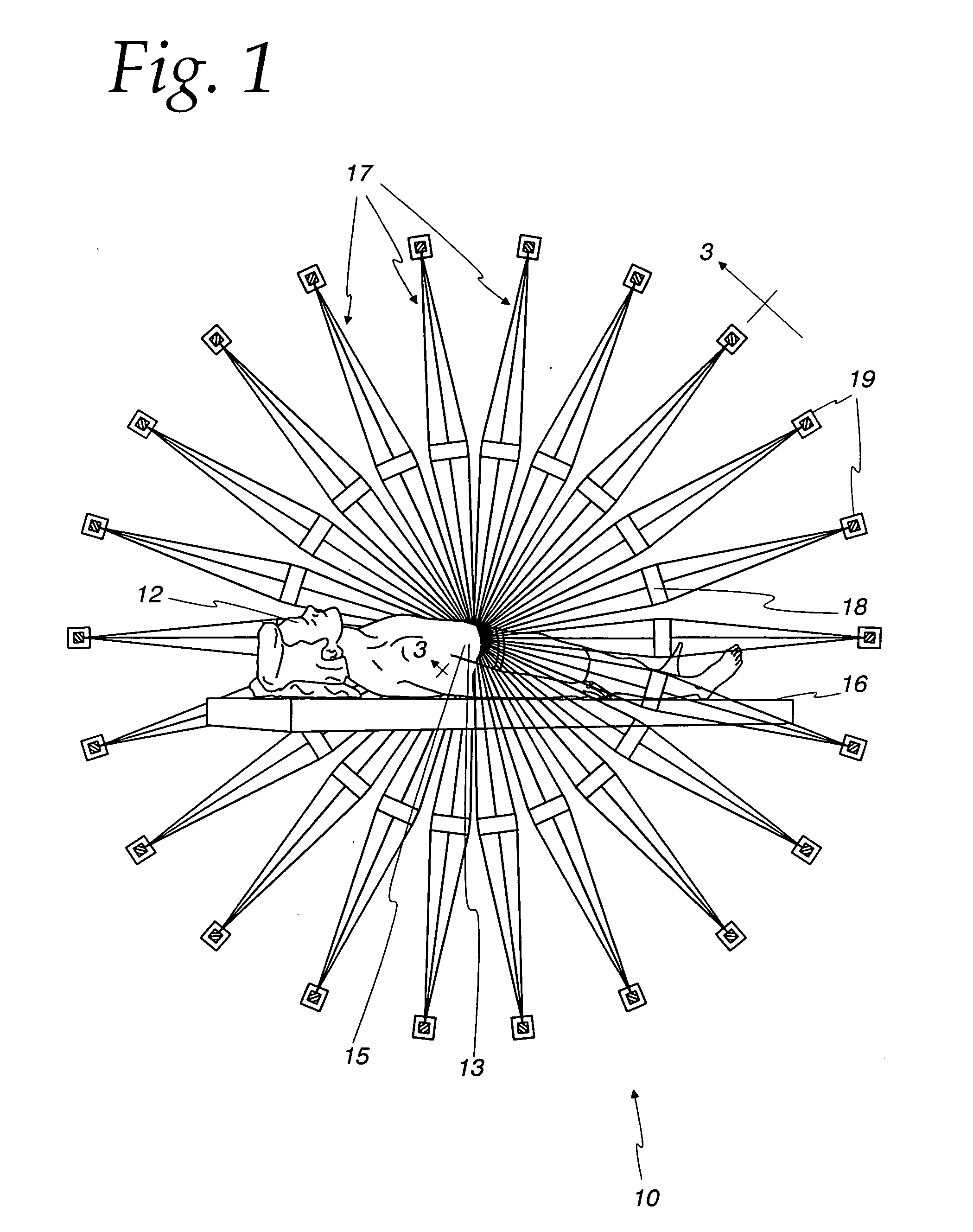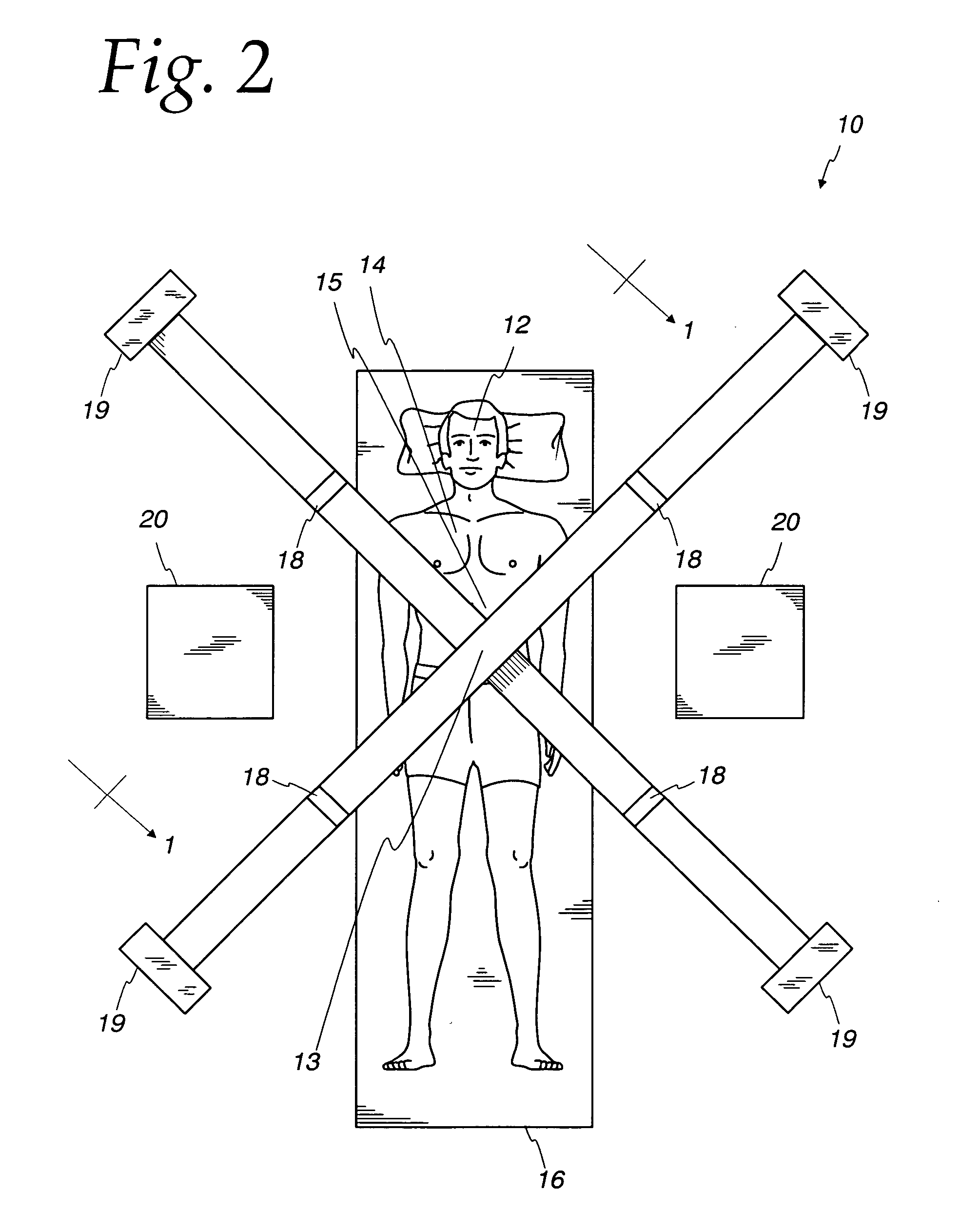High Spatial Resolution X-ray and Gamma Ray Imaging System Using Crystal Diffraction Lenses
a technology of crystal diffraction and imaging system, applied in tomography, applications, instruments, etc., can solve the problems of inability to provide depth information about the source, large additional cost associated with this method, and inability to identify the source in depth, etc., to achieve high purity, high quality, and high resolution image
- Summary
- Abstract
- Description
- Claims
- Application Information
AI Technical Summary
Benefits of technology
Problems solved by technology
Method used
Image
Examples
Embodiment Construction
[0047] The present invention provides an improved method for imaging sources of x-ray and gamma-ray radiation. The invented method can yield a detected image 1 mm or less in size (Full Width at Half Maximum (FWHM) for a point source). The method results in a device, designated generally as numeral 10 in FIG. 1, that incorporates a plurality of lens / detector assemblies 17 to first focus and then detect radiation emanating from a radioactive source 15, such as a tumor in a patient 12 that has incorporated some radioactivity as it grows. Each lens / detector assembly 17 comprises a plurality of high efficiency and high resolution crystal diffraction lenses 18 that focus onto detector arrays 19 only the radiation of a desired energy and origin. As disclosed infra, and with reference to FIGS. 6 and 7, each lens 18 comprises a plurality of concentric rings 45, which in turn are comprised of very accurately mounted diffracting crystals. These crystals are oriented so that only radiation havi...
PUM
| Property | Measurement | Unit |
|---|---|---|
| width | aaaaa | aaaaa |
| size | aaaaa | aaaaa |
| thickness | aaaaa | aaaaa |
Abstract
Description
Claims
Application Information
 Login to View More
Login to View More - R&D
- Intellectual Property
- Life Sciences
- Materials
- Tech Scout
- Unparalleled Data Quality
- Higher Quality Content
- 60% Fewer Hallucinations
Browse by: Latest US Patents, China's latest patents, Technical Efficacy Thesaurus, Application Domain, Technology Topic, Popular Technical Reports.
© 2025 PatSnap. All rights reserved.Legal|Privacy policy|Modern Slavery Act Transparency Statement|Sitemap|About US| Contact US: help@patsnap.com



